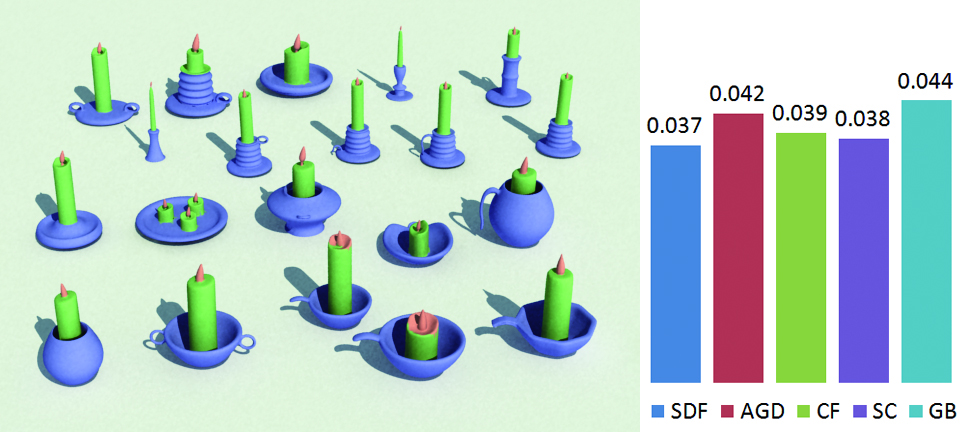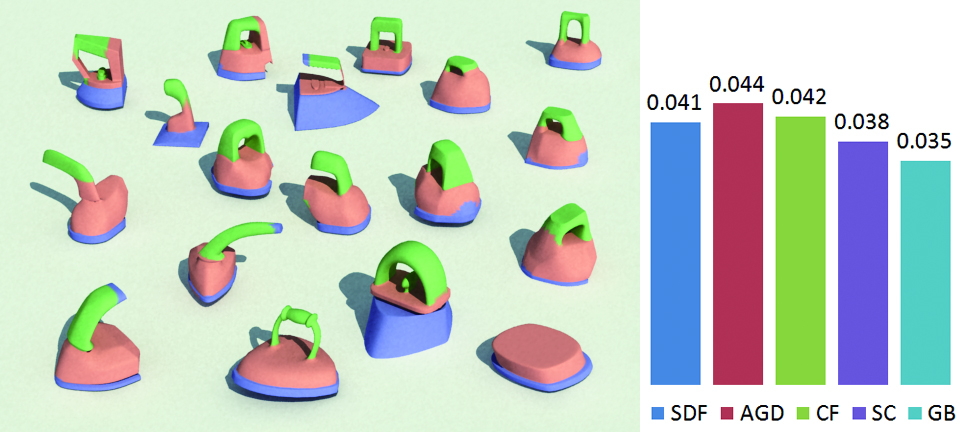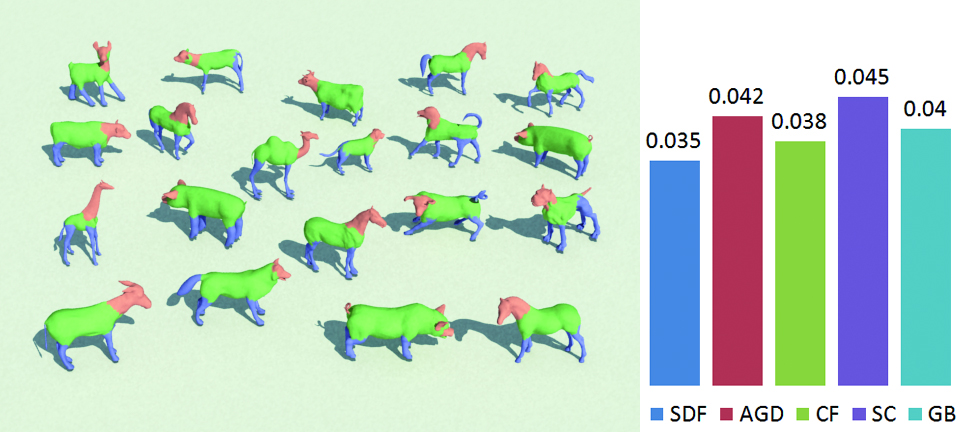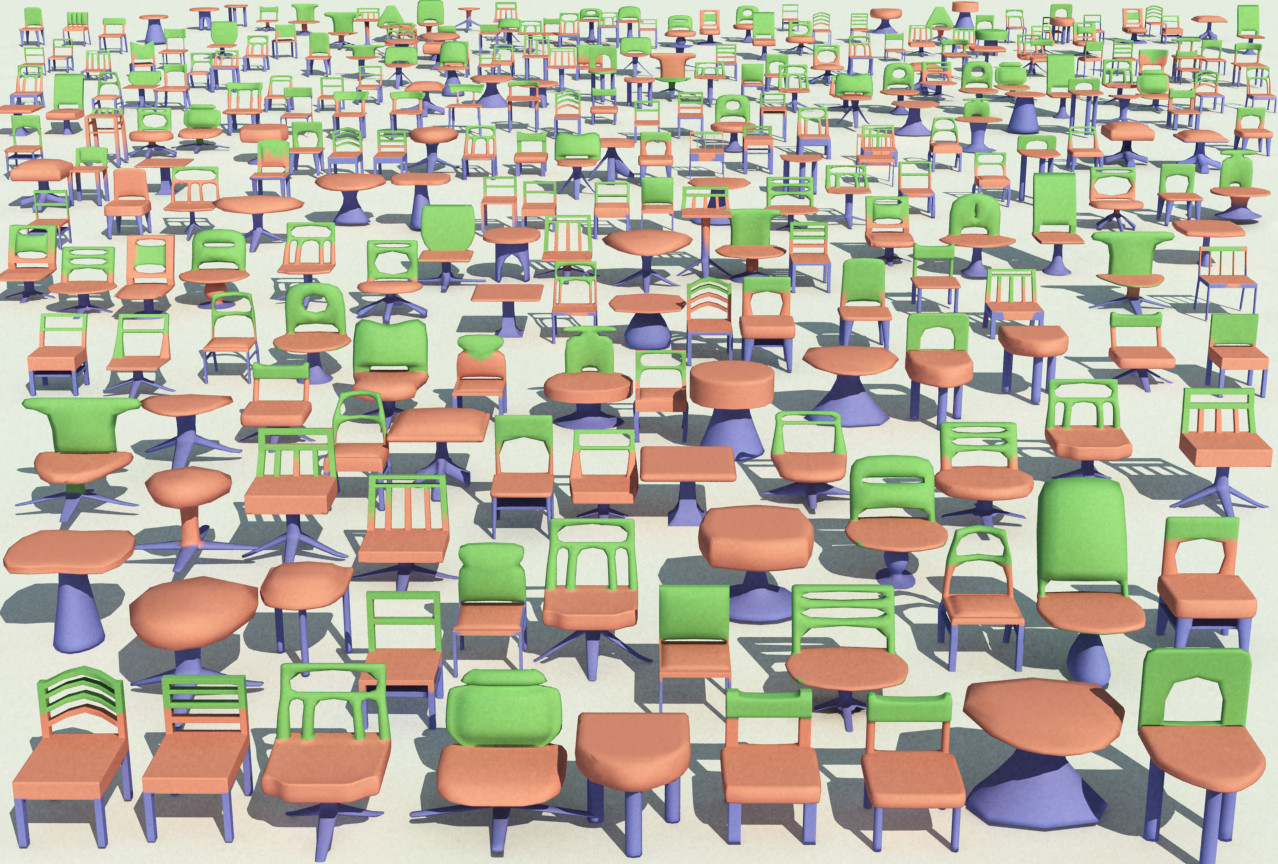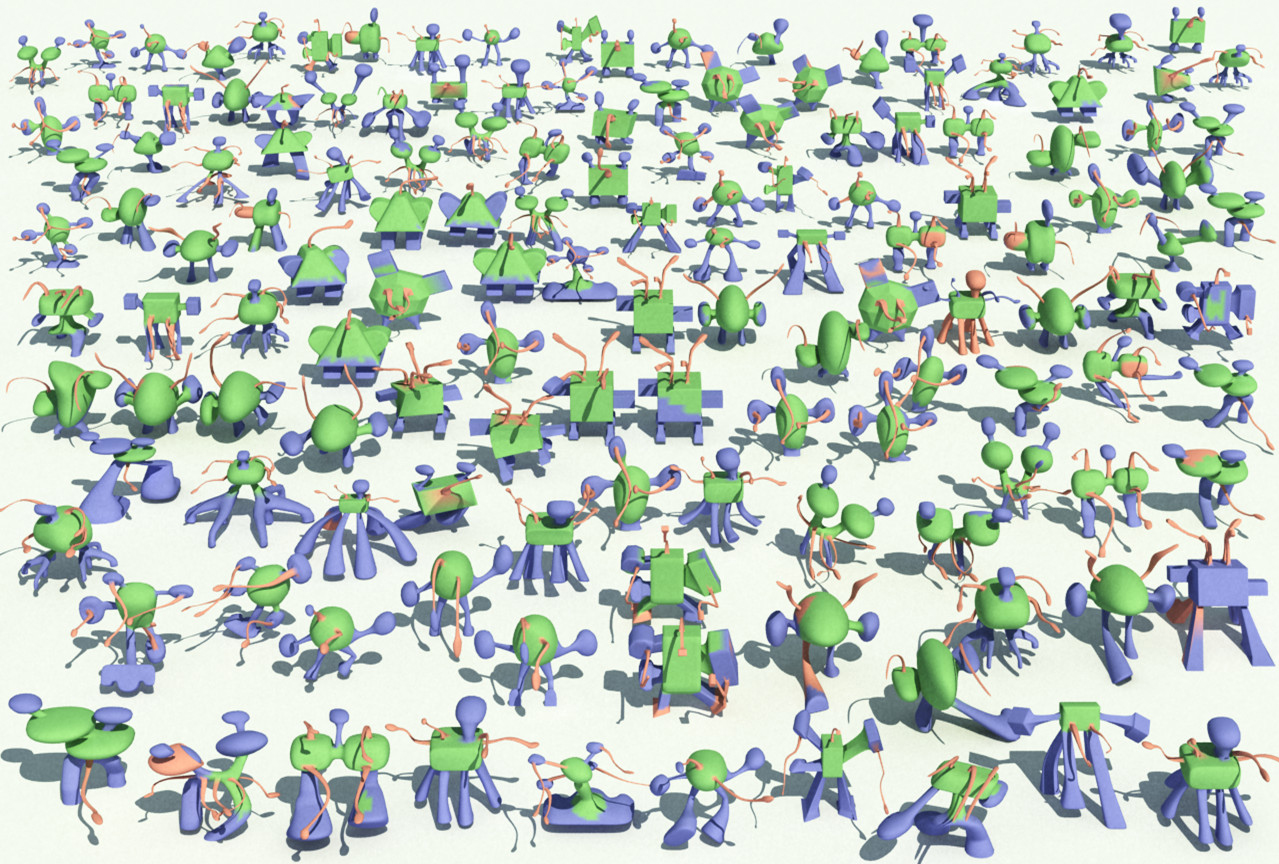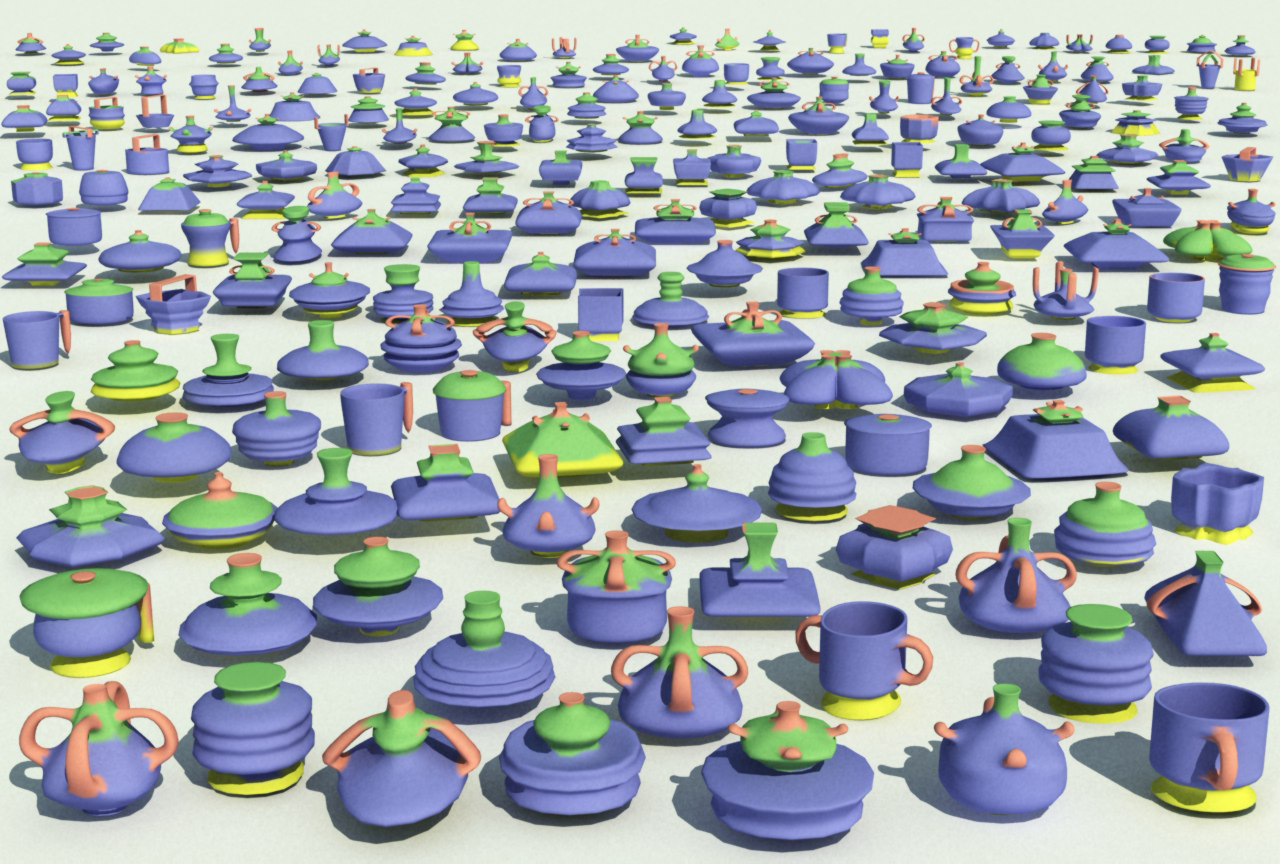Unsupervised Co-Segmentation of 3D Shapes viaAffinity Aggregation Spectral ClusteringComputers & Graphics (Proceedings of SMI 2013) | ||||||||
|
Zizhao Wu1
Yunhai Wang2
Ruyang Shou1
Baoquan Chen2
Xinguo Liu1 |
||||||||
|
Figure 1: Overview of the steps in our co-segmentation: (a) An over-segmentation is computed for each shape. (b,c,d) The 2D spectral spaces of affinity matrices based on the three computed descriptors, where each patch is corresponding to a point in such spaces. Three parts are mixed together in SDF and AGD spaces (b,d), while they fall in different ranges but not clearly separated in GB space. (f,g,h) Our fused space (f) with different weights for each descriptor (g), where the parts are clearly separated, resulting in the segmentation in (h). (e) In comparison, the 2D spectral space of the affinity matrix of the descriptor generated by concatenating three descriptors together, where the bottom and body of the lamp are mixed. |
||||||||
AbstractMany shape co-segmentation methods employ multiple descriptors to measure the similarities between parts of a set of shapes in a descriptor space. Different shape descriptors characterize a shape in different aspects. Simply concatenating them into a single vector might greatly degrade the performance of the co-analysis in the presence of irrelevant and redundant information. In this paper, we propose an approach to fuse multiple descriptors for unsupervised co-segmentation of a set of shapes from the same family. Starting from the over-segmentations of shapes, our approach generates the consistent segmentation by performing the spectral clustering in a fused space of shape descriptors. The core of our approach is to seek for an optimal combination of affinity matrices of different descriptors so as to alleviate the impact of unreliable and irrelevant features. More specially, we introduce a local similarity based affinity aggregation spectral clustering algorithm, which assumes the local similarities are more reliable than far-away ones. Experimental results show the efficiency of our approach and improvements over the state-of-the-art algorithms on the benchmark datasets. |
||||||||
Paper and Supplemental material |
||||||||
Results |
||||||||
|
||||||||
|
Figure 2: Results of our co-segmentation on the COSEG dataset and the PSB dataset. Corresponding segments are shown with the same color. |
||||||||
|
|
||||||||
|
|
||||||||
|
|
||||||||
|
Figure 3: Results of our co-segmentation on the large datasets of COSEG. |
||||||||
AcknowledgementsThe authors would like to thank all the reviewers for their valuable comments. This work was supported by NSFC (NO.61202222 and No.60970074), the Program for New Century Excellent Talents in University of China (No. NCET-06-0516), China 973 Program (No. 2009CB320801), Fok Ying Tung Education Foundation, and the Fundamental Research Funds for the Central Universities. |
||||||||
|
|
||||||||

